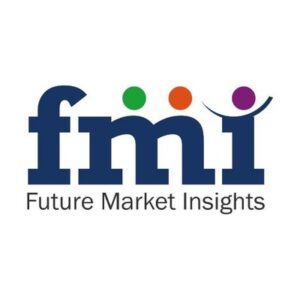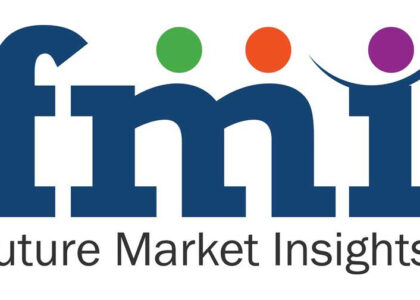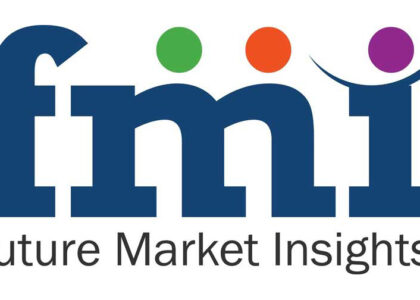The HDPE Bottle Industry is anticipated to exceed US$ 107,797.8 million in 2023 and is likely to attain a valuation of US$ 147,708.9 million by 2033. The HDPE Bottle Industry share is expected to rise at a CAGR of 3.2% from 2023 to 2033.
Some HDPE producers are including biodegradable ingredients in their bottles in response to environmental concerns. While HDPE is not biodegradable, some additions improve HDPE breakdown in particular situations, such as composting or exposure to certain bacteria. This trend is an essential step in addressing the problem of plastic waste in the environment.
The incorporation of groundbreaking HDPE bottle designs, features, or components holds the potential to stimulate enduring market expansion by attracting new customers or motivating existing ones to upgrade their packaging solutions. Innovations that align with prevailing consumer preferences, such as convenience and sustainability, can play a pivotal role in maintaining and even boosting demand in the market.
Request free sample of this research report: https://www.futuremarketinsights.com/reports/sample/rep-gb-7598
Smart Sustainability Metrics in HDPE Bottle Packaging Will Fortify Brands’ Transparency
The packaging of HDPE bottles is undergoing a significant transformation, with a burgeoning trend that involves harnessing data and technology to quantitatively measure and communicate the environmental impact of these bottles. This innovative approach incorporates smart sustainability measures that are driven by the growing need for eco-conscious practices. Businesses are progressively adopting this approach to gain a comprehensive understanding of the entire lifecycle of HDPE bottles, encompassing their journey from manufacturing through to disposal. This is made possible through the utilization of cutting-edge technologies such as IoT (Internet of Things) sensors and RFID (Radio-Frequency Identification) tags, which enable the meticulous monitoring and analysis of various environmental factors throughout the bottle’s lifecycle.
Sales are Likely to Rise at a Near Consistent CAGR in the Coming Decade
The historical performance of the HDPE bottle industry has demonstrated a commendable track record, with a steady Compound Annual Growth Rate (CAGR) of 3.0% from 2018 to 2022. This trend is projected to continue, with a modest expected increase of 0.2% extending through 2033. A noteworthy aspect of this industry is the recurring demand for HDPE bottles by businesses, driven by the necessity to replenish their packaging inventory in alignment with established replacement cycles. As long as market dynamics remain stable, this pattern of consistent demand is anticipated to underpin the industry’s sustained and steady growth.
Drivers
- Sustainability Concerns: Increasing awareness about environmental issues and the need for eco-friendly packaging materials drive demand for HDPE bottles, which are recyclable and have a lower environmental impact compared to some other plastics.
- Consumer Safety: The superior chemical resistance and inert properties of HDPE make it a popular choice for packaging products that require protection from external contaminants, ensuring consumer safety and product integrity.
- Versatility: HDPE bottles are versatile and can be used in various industries, from pharmaceuticals to personal care products and food packaging, contributing to their widespread use.
- Lightweight and Durable: The lightweight nature of HDPE bottles makes them cost-effective in terms of transportation and reduces their carbon footprint. Their durability ensures the safe storage and transportation of various products.
- Cost-Effectiveness: HDPE is relatively cost-effective compared to other materials, making it an attractive option for manufacturers looking to balance quality and affordability.
- Regulatory Compliance: HDPE bottles often meet regulatory standards and requirements for packaging in industries such as food, pharmaceuticals, and healthcare, providing a level of trust and compliance.
- Innovations and Customization: Continuous innovations in HDPE bottle designs and the ability to customize them to meet specific product requirements drive their adoption in the market.
- Market Trends: Consumer preferences for convenient and sustainable packaging options align with HDPE bottles, influencing market growth.
Recent Innovations
- In December 2022, Austria-based packaging manufacturer Alpla Group announced the development of a “carbon-optimized prototype solution” for beauty product brand owners. This development is for the shape of a high-density polyethylene (HDPE) container manufactured completely of recycled-content HDPE (rHDPE). According to the firm, their Canupak beauty care (shampoo and liquid soap) packaging exemplifies Alpla’s worldwide sustainability approach by allowing clients to lower their emissions volumes or carbon footprint significantly.
- In February 2022, Colgate released their unique recyclable tube in the United States. The corporation used a powerful slogan on the box to spread the word. Colgate-Palmolive’s tube, the first to be recognized as recyclable by external recycling bodies, is made of High-Density Polyethylene (HDPE), the No. 2 plastic used for milk and detergent bottles.
Ready to Learn About Our Approach? Explore Our Methodology: https://www.futuremarketinsights.com/request-report-methodology/rep-gb-7598
The Major Key Payers Are:
- Gerreshemier AG
- Berry Global Group Inc.
- Silgan Plastics Closure Solutions
- Berk Company LLC
- Amcor Ltd.
- CL Smith
- RPC Group Plc
- Graham Packaging
- Nampac Limited
- ALPLA Werke Alwin Lehner GmbH & Co. KG
Key Segmentations:
By Cap Type:
- Screw Closure
- Snap Closures
- Push-pull Closures
- Disc Top Closures
- Spray Closures
- Dispensers
- Dropper
By Bottle Capacity:
- Less Than 30 ml
- 31 ml to 100 ml
- 101 ml to 500 ml
- 500 ml to 1Lt
- Above 1Lt
By Visibility:
- Translucent
- Opaque
By Neck Type:
- Narrow Mouth Bottles
- Wide Mouth Bottles
By End-user:
- Food & Beverages
- Dairy Products
- Juices
- Others
- Chemical
- Agro Chemicals
- Industrial Chemicals
- Lubricants & Petrochemicals
- Specialty Chemicals
- Pharmaceuticals
- Personal Care & Cosmetics
- Homecare & Toiletries
By Barrier Type:
- Low-barrier Bottles
- High-barrier Bottles
- Fluorinated Bottles
- Polyamide (PA) Layer Bottles
- Ethylene Vinyl Alcohol (EVOH) Layer Bottles
For any Queries Linked with the Report, Ask an Analyst: https://www.futuremarketinsights.com/ask-the-analyst/rep-gb-7598
About Future Market Insights (FMI)
Future Market Insights, Inc. (ESOMAR certified, recipient of the Stevie Award, and a member of the Greater New York Chamber of Commerce) offers profound insights into the driving factors that are boosting demand in the market. FMI stands as the leading global provider of market intelligence, advisory services, consulting, and events for the Packaging, Food and Beverage, Consumer Technology, Healthcare, Industrial, and Chemicals markets. With a vast team of over 5000 analysts worldwide, FMI provides global, regional, and local expertise on diverse domains and industry trends across more than 110 countries.
Contact Us:
Future Market Insights Inc.
Christiana Corporate, 200 Continental Drive,
Suite 401, Newark, Delaware – 19713, USA
T: +1-845-579-5705
For Sales Enquiries: sales@futuremarketinsights.com
Website: https://www.futuremarketinsights.com
LinkedIn| Twitter| Blogs | YouTube




